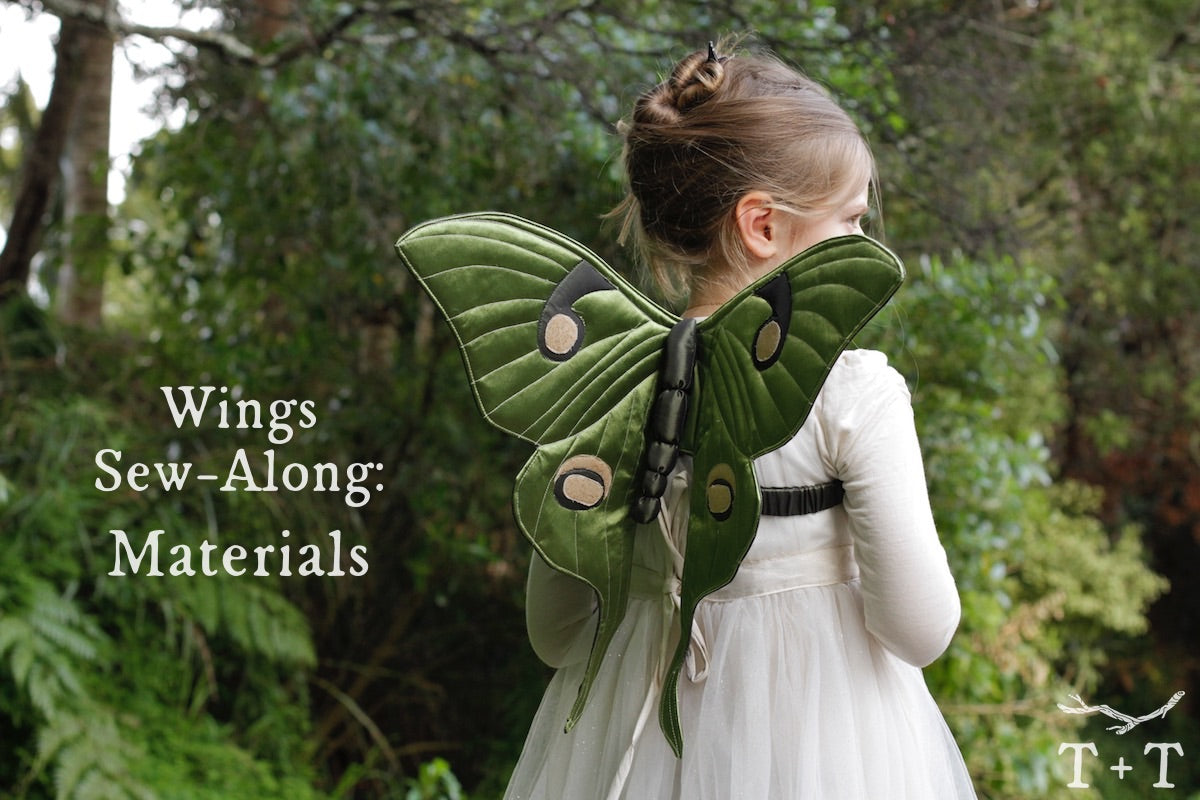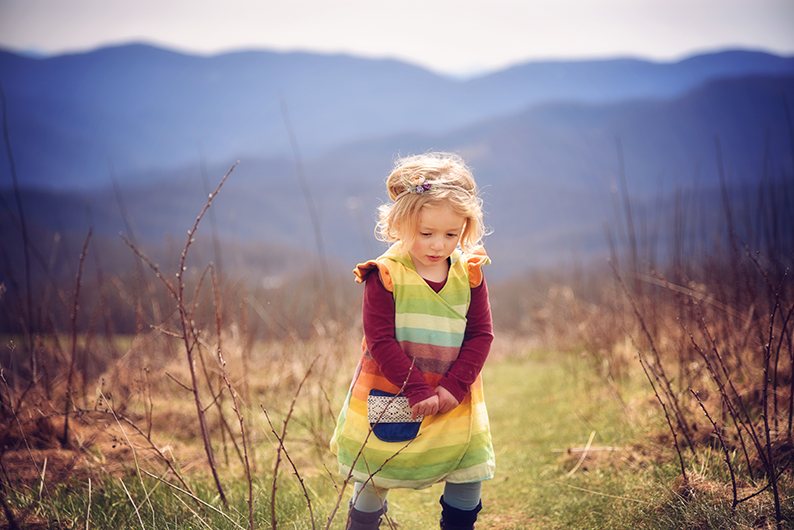Hello and welcome to the Twig + Tale Wings Sewalong - we are so pleased that you're joining us! To start, we'll share a bit of extra information about the materials required to sew a pair of Wings to ensure your success.
At Twig + Tale, the Wings Collection holds a special place in our hearts. These patterns represent so much of what we hold dear - the magic of childhood, imagination, and nature-inspired design. Putting the time and love into creating heirloom-quality pieces, and approaching sewing with an adventurous spirit.
Something that we commonly hear from those who are sewing wings for the first time is "I was nervous to try sewing wings, but I was able to do it and the results were magical". We're confident that you can do it too!

Main wing fabric and appliqué
This is a fun part - selecting wing fabric! Wings are such a wonderful canvas for playing with colour, pattern, and texture. Nature has provided amazing inspiration in the beautiful array of moth and butterfly wings - how will you interpret them? Bright colours, or muted? Solid-coloured fabrics, or patterned? Remember that you can use a different fabric for the front and back of the wings as well.
Now for some practical considerations... For the main wing fabric, we don’t recommend using anything heavier than a quilting cotton. Heavier-weight fabrics may prove problematic when it comes to turning and top-stitching the wings since there will be too many layers to sew through. Look for stable, woven fabrics (avoid anything with stretch - it will make sewing around all those curves very challenging). Cotton, linen, satin, lawn, viscose rayon, lightweight chambray, and silk are all suitable.
The appliqué on the wings provides the perfect opportunity for using special little scraps of fabric that tend to pile up, but are too pretty to part with.
Consider upcycling fabric for your wings - this project is a lovely way to give pre-loved textiles a new life. Dresses, skirts, curtains, and linens such as tablecloths would all yield plenty of fabric for a pair of wings.
A word or two about interfacing…
Interfacing is a key element for the success of your wings. The interfacing commonly used for apparel projects does not have enough rigidity for making wings. Instead, we will be using a heavyweight interfacing suitable for crafts - think hat brims, structured bags and the like. If your fabric store doesn't have the recommended interfacing, ask for a heavyweight craft interfacing.
The world of interfacing can be confusing: since brands vary from one country to another and bolts of interfacing often lack any sort of identification, it is a bit difficult to come up with a comprehensive list of recommended types. If you happen to find a type of interfacing that works very well for wings, please let us know and we will add it to the list!
We will be using two different types of interfacing: heavyweight fusible interfacing, as well a layer of heavyweight sew-in interfacing. The sew-in interfacing should be roughly the same weight as the fusible, and transparent enough to trace the lines from the wing template. (If you have trouble finding a suitable sew-in interfacing, you can choose to simply use more of the fusible, but not fuse it.)
| Australia/NZ | North America | Europe | |
| Fusible Interfacing | Formfuse 1600f | Pellon 809 Decor Bond | Vlieseline S320 or S520 |
Can't find these interfacings in your location? We've gathered other suggestions in our Twig + Tale Chat group, based on products used successfully by other members of our creative community. There is a video showing some of the attributes you should be looking for, as well.
Batting
The layer of batting plays a role in adding some extra structure and thickness to the wings, but also provides depth to the quilting lines, accentuating all the beautiful shapes in the wings. Anything from 5-20mm batting is appropriate. If you have thin batting, it is always possible to double up for more depth.
While we normally love promoting use of natural materials, this is one instance in which we recommend a synthetic batting - cotton and wool batting tends too be too heavy and will weigh your Wings down.
Sewing Machine Needles
As the wings come together, we'll be sewing through several layers of fabric, interfacing, and batting, so heavy-duty sewing machine needles are a must. A heavy-weight jeans needle is a good choice - they are sturdy and have a good, sharp point to punch through the layers. Look for size 100/16 or similar.
Thread
Special threads are not required for the Wings - however, make sure you have plenty of your chosen thread! It may be prudent to purchase two spools, and wind a few bobbins before starting. Quilting and applique can use a lot of thread quite quickly, and no one likes to have to stop mid-project and re-wind a bobbin!

If you have any questions about materials, please feel free to leave a comment on the Twig + Tale Chat Facebook group - we are happy to answer questions, and would love to see what fabrics you have selected.

